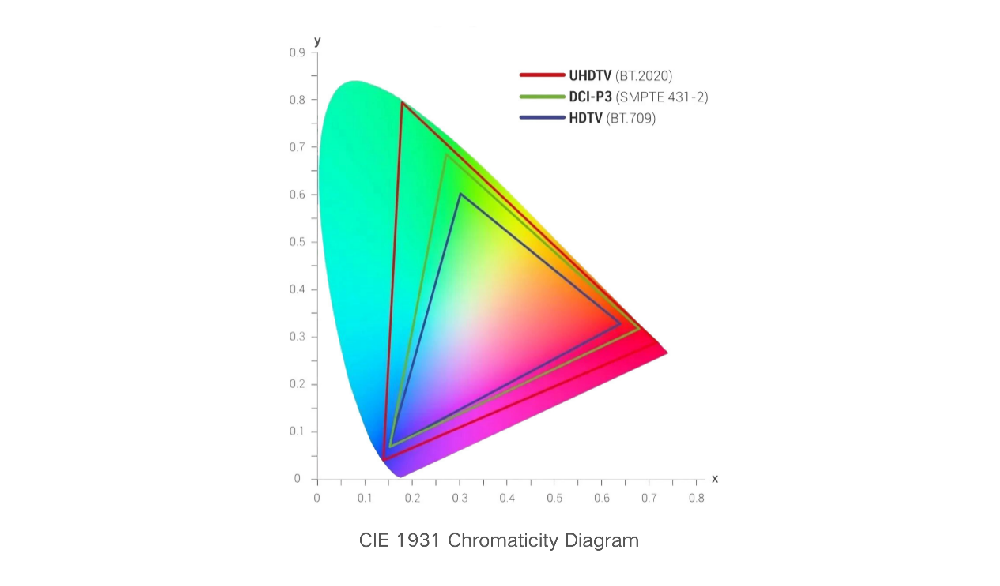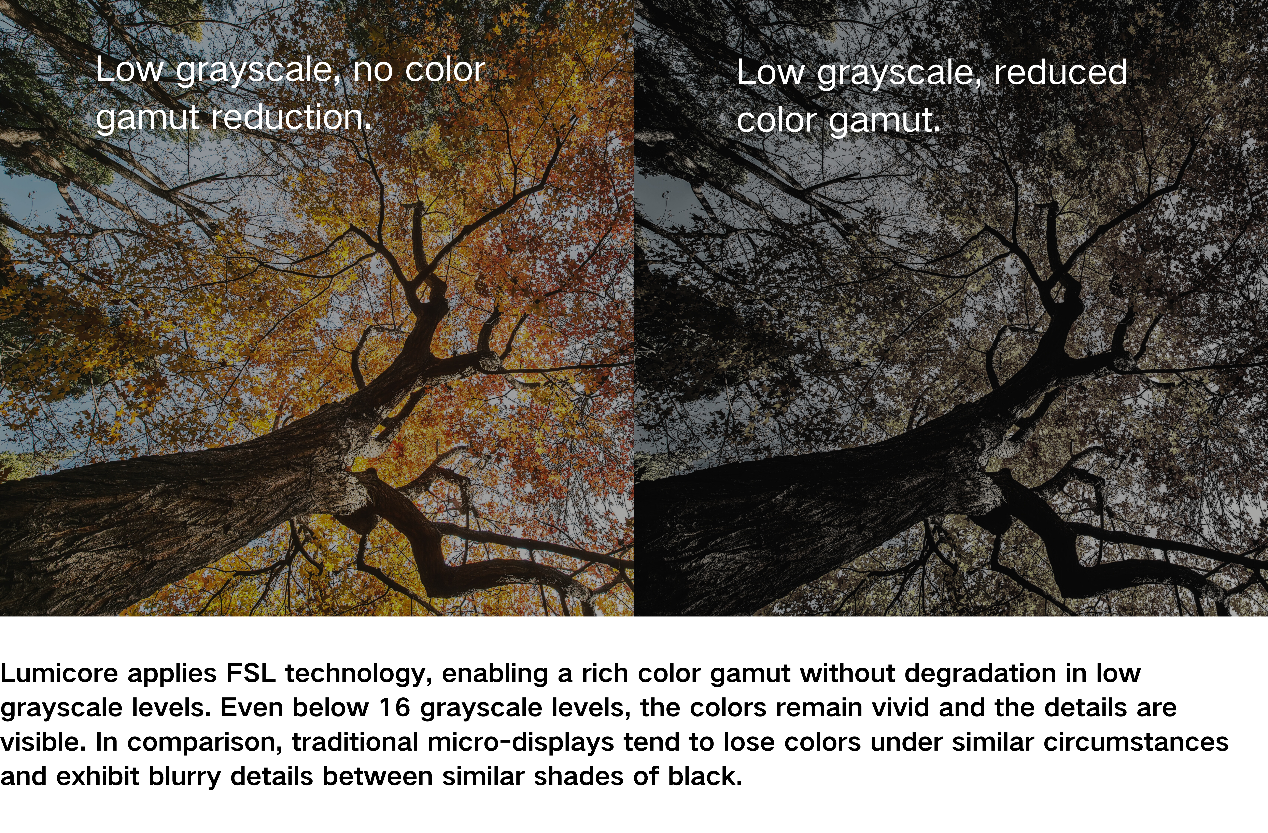Time:2024-05-08 11:07:10
Color is a significant attribute through which humans perceive the physical world. In our visual system, different distributions of the light spectrum correspond to the various colors we recognize. The perception of color is crucial for identifying objects, classifying them, and processing emotional cognition.
In the digital realm, there has been a consistent pursuit of technology capable of broad and accurate color displays in monitor devices, and from this pursuit, the concept of color gamut has emerged.
What is Color Gamut?
Light is a wave, among which the wavelength range identifiable by the human eye spans from 380 to 750 nanometers — this portion is known as visible light. By mathematically transforming the color and brightness information of visible light and plotting it on a plane, we can obtain the famous CIE-1931 color space diagram, which represents the entire range of colors that can be perceived by the human eye.
In the digital world, the color range of a display hinges on the mixture of three subpixels: red, green, and blue. The maximum color range of a display can be represented by the triangle formed by connecting the extreme points of the red, green, and blue subpixels. This region denotes all the colors that the display device can reproduce, and is also referred to as the color gamut.

What is a color gamut standard?
The most advanced display technologies today still cannot fully reproduce all the colors within the CIE-1931 color space, and the range of colors that various monitors cover differs. Various industries have established corresponding color standards to achieve uniformity. These industries select specific areas within the CIE-1931 color space diagram as benchmarks and have defined multiple color gamut standards to ensure the consistency of color information across different applications. Consequently, different application scenarios may adopt different color gamut standards.
Currently, common display color gamut standards include sRGB (the default color space for Windows systems), Adobe RGB (often used for printing and photography), and DCI-P3 (commonly utilized in film production). Compared to sRGB, both Adobe RGB and DCI-P3 offer a larger color gamut, allowing for a more extensive range of colors to be displayed. The color gamut percentage pertains to the ratio of the area of the triangle formed by a monitor's primary colors to the area of the triangle formed by the primary colors defined by the color gamut standard on the CIE 1931 chromaticity diagram. When this ratio is greater than 80%, it is typically referred to as a wide color gamut.
Color Gamut in Micro-OLED Displays
The human eye's ability to perceive varies under different brightness conditions. In dimmer environments, our eyes are more sensitive and can distinguish subtle differences more easily.
Conventional micro-OLED technology controls the current passing through an OLED device by adjusting the voltage of pixel driving transistors, which in turn produces corresponding grayscale levels. At high grayscale levels, micro-displays exhibit rich colors, complex details, and refined image quality. However, at low grayscale levels, maintaining the same level of color performance becomes challenging, especially below 16 grayscale levels, where detail is significantly compromised. Coupled with the physiological effects on the human eye, this issue becomes even more pronounced.
Lumicore's FSL technology employs digital scanning with pulse-width modulation to regulate brightness, achieving exceptional low-gray performance. Even below 16 grayscale levels, micro-displays maintain robust detail representation.

Wide color gamut is now widely recognized by display manufacturers and users alike, but ensuring consistently excellent display performance across different scenarios is also a crucial feature of premium products.